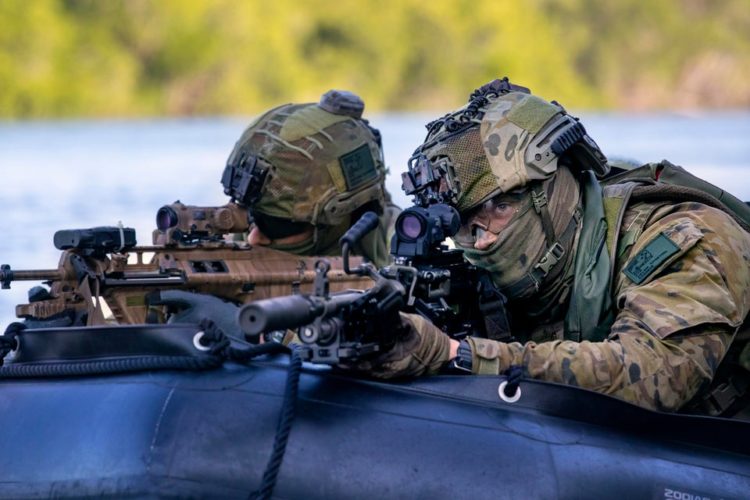The Australian government has announced that it will spend $186 billion over the next decade, in increased defense spending, to strengthen its capabilities. This will amount to a 40 percent increase in its defense budget. This development happened in the context of rising tensions with China in the Indo-Pacific region.
The increase in defense spending will help better protect Australian interests in both the South China Sea and the East China Sea, where the Chinese government is growing increasingly belligerent.
Australian Prime Minister Scott Morrison spoke to the Australian Defence Force Academy in Canberra last week. While he did not mention China specifically there was little doubt whom he referring to when he stated that Australia was facing its toughest international situation since the beginning of World War II.
“We need to… prepare for a post-COVID-19 world that is poorer, that is more dangerous and that is more disorderly,” Morrison said.
Morrison added that the “risk of miscalculation and even conflict” is growing and called the Indo-Pacific region the “focus of the dominant global contest of our age.”
What the announcement left unsaid, was that Australia is taking a more proactive approach to defense spending.
While the stated purpose of the increased defense spending is to deter Chinese expansion into Australian space, it is also an admission that, for the first time since WWII, the Australians are not counting on the United States’ aid in any conventional conflict. Yet, Australia and Japan are currently the two lynchpins in the U.S.’s Pacific strategy.
However, the Australian government is buying from the U.S. Navy the AGM-158C long-range anti-ship missile, which can travel up to 370 kilometers (230 miles). The cost will be about $800 million dollars. Still, this anti-ship missile is still far below the Chinese DF-26 missile which has a 4,000 km range.
Additionally, in light of the increased Chinese belligerence against India in the Himalayas, and elsewhere in the region, India and Australia agreed to two bilateral military agreements that will strengthen the ties between the two countries.
The head of the National Security College (NSC) at Australia’s National University, Rory Medcalf, said the country’s new plan was to prepare for a future with a greater emphasis on self-reliance and to protect Australia from an increasingly aggressive Chinese expansionist government.
“This is all about China’s assertive use of its power and the way in which China has essentially abused the window of COVID-19 to intensify its assertiveness,” Medcalf said.
The Australians want to beef up their radar capabilities facing east while building their own satellite system, thus not relying on the U.S. government. “That means that the Australian government is convinced that it will be looking at an increased Chinese military presence off our east coast in the South Pacific,” Medcalf added.
Beijing-based naval expert Li Jie said last week that the Chinese have no intention of provoking Australians but they are “not afraid of Australian provocations.” Jie added in a statement to the Global Times that in the event that the Australian military wants to “provoke China, China is also ready to defend itself.”
Would the increased defense spending deter the Chinese if Australia had to act alone without the help of the United States? Probably not. But despite the lack of confidence in Washington from the Asiatic part of the world, the Chinese would have to think long and hard about getting into any conflict with Australia and risk getting not only the U.S. but other nations involved as well.










COMMENTS
You must become a subscriber or login to view or post comments on this article.